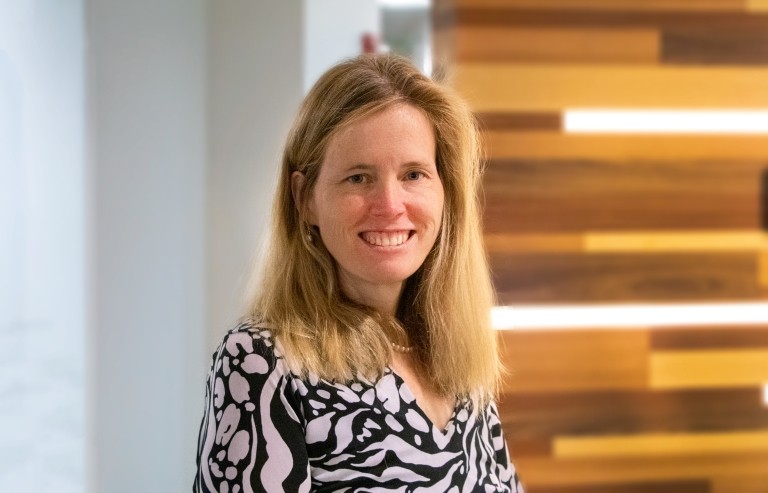Blog
Views through the glass ceiling: A conversation with Pact’s Human Capital Officer

Michelle Jones is Pact’s Chief Human Capital Officer. With more than 15 years of experience in organizational culture, development and change, employee recruitment and engagement, and talent development, here Michelle shares her thoughts on women in leadership and what’s next for Pact and the international development sector.
Talk to us about the importance of women in leadership.
For societal reasons, women have not been afforded the same kind of opportunities that many men have. They have had to work twice as hard not just to have a seat at the table but to voice their opinions. Even when sitting at the same table, a woman’s voice is often self-censored or overridden by her male counterparts. We know our best thinking comes when there is full diversity in decision-making. What too many male leaders are willing to overlook is that gender is a critical piece of that diversity. It is critically important that we continue all of the good work that has been done to have more women in leadership roles. This is not simply to afford women the same opportunities, but to ensure that the best solutions, opportunities and insights are available to the organizations they help lead.
We are fortunate in our sector that many people and organizations are working toward gender diversification, however, there are still many industries that are lagging behind. More than once I have been on leadership teams where I was the only female. It was a competition just to try to keep my seat at the table because of the lack of inclusion. We must all come to the table together equally and value one another’s strengths.
So, what advice would you give to women as they look to advance in their careers?
Women need to stop questioning themselves. Since I do this all the time, I know it is easier said than done. I have advised countless young women in their careers to just go for it—apply for roles they may not even get. Never once have I had to give that advice to a man, and I mean this literally. Women need to know how important their contributions are.
And for those women who choose to raise children while working, they must free themselves from any guilt they may feel. Don’t second guess your decision to put your children first; proudly walk out the door on time to pick up your child. All parents should feel this empowerment but often times women are harder on themselves. Here, women can serve by leading by example.
How is Pact actively taking steps to address gender parity in the workplace?
Pact is proud to be relentlessly working on gender parity.
We are lucky to have a Gender, Equity, Diversity and Inclusion Council with worldwide representation that is working on a number of issues, including diversity. The teams I have worked with through the Council are inspiring and are always pushing us ahead. They are having the difficult conversations that we all need to have in the workplace on all of the issues around diversity. Through their work, they are showing others what’s possible.
As a global organization that works in nearly 40 countries around the world, we’re seeing leadership from across the entire organization. Many of our global Country Directors and HR leaders have made gender diversification a strategic initiative at the local level. I can’t even tell you how exciting this is to me! Today, many of our country offices have specific strategies around gender diversification.
We are also proud to have signed on to the FAIR SHARE leadership commitment to ensure equal representation of gender at the organizational leadership level. The results of this will be released later in March, but I am pleased that Pact has increased its gender representation in leadership over the past year.
Another way we’re addressing gender parity is by working to ensure that our hiring practices encourage hiring women and men across all levels. This doesn’t mean we will only hire a man or woman for a role. Instead, we look systemically each month at our hiring trends and how many women and men have applied for our roles. When the gender mix seems off, we dive deeper into the recruitment practices so that we can be sure we have the right gender diversification in our hiring pools.
What can others do to help close the gender leadership gap?
In every organization and at every level, we all must keep the conversation alive. While there are many issues we need to continue talking about, we can’t let the gains we’ve seen in this area slow down. We still have a long way to go to get to true gender equity. We won’t achieve it if we stop talking about it and stop pushing ourselves to be better.
Looking to the future, where do you see Pact and the broader development sector on this issue this time next year?
With increasingly more women in leadership and the ongoing sharing of what’s working and, more importantly, what isn’t, Pact will continue to lead the way. We have recently hired a new CEO who is female. She joins a leadership team with women in the Chief Human Capital Officer, Chief Financial Officer and General Counsel roles. While a year is not enough time to see significant change, I predict this trend in better hiring practices that result in more informed leadership will become the standard. Our organizations are doing some of the most complex and important work across the globe. Those with whom we work deserve the best we can give and that means a better balance in leadership.